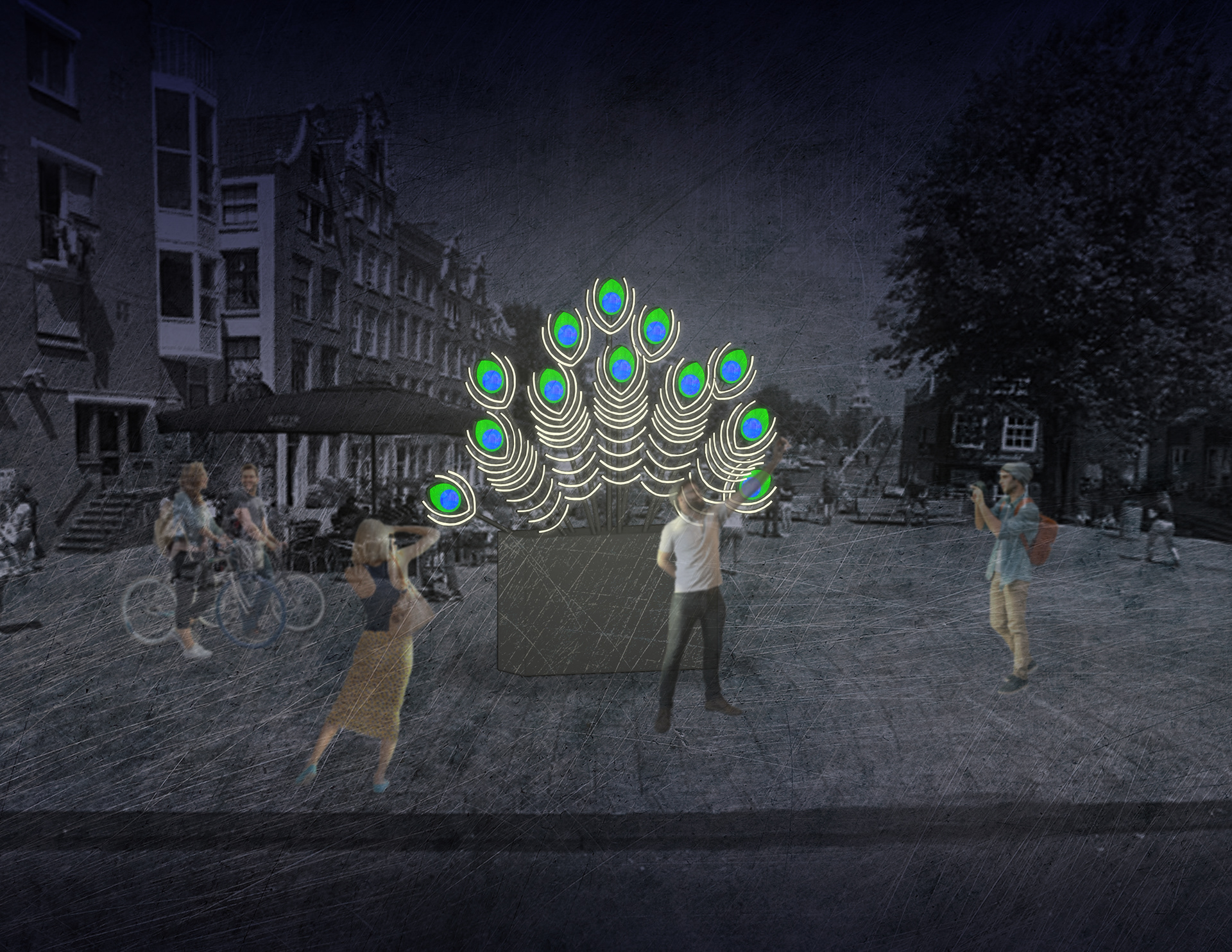
Rendered Concept
THE CONCEPT
It is only in the presence of a crowd that a peacock shows its beauty.
Ocelli or “eyespot”, is the term we use to describe the spots in a peacock’s tail or train. They are only visible when the train is fully extended. But a peacock will only show it’s beautiful tale when it wants to impress. When a visitor approaches Ocelli, the piece will sense this presence showing its beauty in full shine. With this interaction, the visitor is witness but also protagonist of the experience, becoming one with the piece – becoming the peacock. In the absence of interaction, the Ocelli twinkle, calling out to the crowd and inviting them to approach it and incite change.
THE THEME
The peacock’s plumage – the cause of Darwin’s headache.
Peacock’s feathers are iridescent. They “disrupt” the light waves making them change color depending on the viewer’s point of view. But historically, the peacock’s plumage had a more important role in shaping the theory of evolution. For Darwin, the peacock was a disruption in his theory of Natural Selection. Being a man of his time, he believed women to be inferior to men. After years of studying peacocks and other birds, he had to accept that in some species, evolution depends on “women’s choice” and males must fight to impress the females. Thanks to peacocks, Darwin developed his theory of Sexual Selection.
Rendered Animation
THE VISITOR EXPERIENCE
OCELLI will show two scenes, one where the eyes will twinkle
slowly and one where the plumage will impress.
slowly and one where the plumage will impress.
When visitors observe from far, the eyes will be calling out to them, twinkling slowing, seeking attention. As soon as a visitor steps in front of the installation at a specific distance, the plumage will open and glow, making the visitor the center of attention. Just like a peacock.
When the visitor steps away, the piece will go back to its “twinkling eyes” scene.
Elevation and Section - N.T.S.
THE TECHNICAL PRINCIPLE
The installation will be made of outdoor rated lighting equipment. The controls will be housed in an outdoor rated box to withstand the elements. All the equipment and weights will be in the base, as shown in the section. The feathers will be composed of white luminous LED tape rated for exterior environments and the “eyes” will be luminous sealed enclosures with color LED. The “eyes” will have a clear acrylic cover with a decorative dichroic film to simulate the iridescent effect visible in real peacock feathers. To detect the presence of a visitor standing in front of the installation and activate the scenes, a proximity sensor will be located in the front of the wood base.